Foilboard Surfing: A Comprehensive Exploration
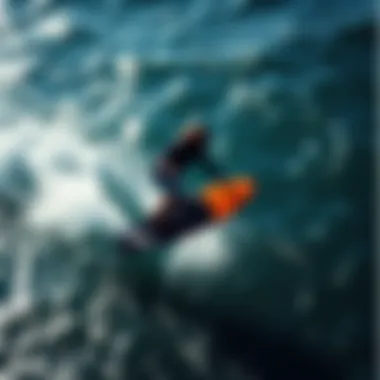
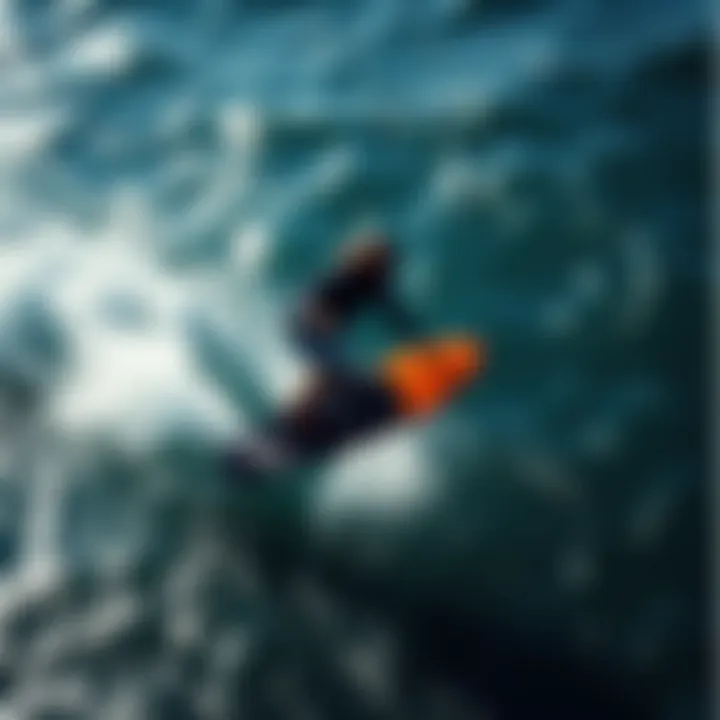
Intro
Foilboard surfing has taken the water sports world by storm, creating waves of interest among both seasoned surfers and newcomers alike. At first glance, it might seem like just another trend, but reinforced by technology and user experience, it offers a unique twist to traditional surfing. The act of gliding above water, harnessing the power of the wind and waves, captivates many. Just think about it: you're not just riding the waves but floating above them.
In this article, we venture into the depths of foilboarding, peeling back the layers on its evolution and the design that makes it function like a charm. The community around this practice is passionate and continuously growing, fostering excitement about the sheer possibilities of what can be achieved on a foil. For both enthusiasts and those who are just dipping their toes into this sport, this exploration is designed to provide finer insights—clarifying the benefits, raising awareness about the challenges, and offering practical guidance for those who wish to join the fray.
Let's get started by looking at the gear insights that every aspiring foilboarder needs to know.
Gear Insights
Having solid gear is paramount to a successful foilboarding experience. Whether you're an old hand or a novice rider, knowledge about the latest equipment truly makes a difference.
Latest Gear Reviews
Recent innovations in foilboard design and functionality have spurred excitement among kiteboard enthusiasts. Here are a few products that deserve a spotlight:
- Naish Impulse Foil: This model is lauded for its stability and ease of use, perfect for those new to foilboarding. Its adjustable mast length caters to varying skill levels.
- Slingshot Hover Glide: Known for its versatility, this hydrofoil setup has options for foiling at different speeds and conditions, making it ideal for adventurous riders.
- RRD Type 1 Foil: This choice stands out for performance and speed. It's crafted for riders who crave high-octane thrills.
These tools are touted for their quality and performance, but what’s essential is aligning the right gear with your personal style and riding conditions.
Essential Gear for Beginners
For newbies stepping into foilboarding, having the right essentials is your lifeline. Here’s a basic checklist:
- Foilboard: A beginner model should prioritize stability, allowing you to get comfortable on the water.
- Foil: Opt for a smaller wing size for easier control while you learn.
- Kite: A medium-sized kite generally works well as it balances lift and control.
- Safety Gear: A good helmet and impact vest can keep you safe during falls.
Remember, every surfer has their preferences, so experimenting with different setups might lead you to your perfect match.
"Performance in foilboarding heavily depends on tuning your gear to fit your style and what you're hoping to achieve."
Navigating through the nuances of gear is the cornerstone to enjoy the exhilarating sport of foilboarding. Next, we’ll take a detailed look into the techniques and tips that will help enhance your skills in the water.
Prelims to Foilboard Surfing
Foilboard surfing is not just a fad; it has woven itself into the very fabric of water sports, captivating enthusiasts with its unique blend of innovation and excitement. As we embark on this exploration, it becomes essential to grasp the significance of foilboarding and its influence on modern surfing trends. Given the complexity and novelty of this discipline, this section serves as a crucial starting point, setting the stage for a comprehensive understanding of foilboarding's mechanics, culture, and community.
Defining Foilboarding
Foilboarding, at its core, involves riding a specialized surfboard that is elevated above the water's surface by a submerged hydrofoil. This unique design allows surfers to catch and ride waves with greater efficiency, creating a sensation akin to gliding through the air. It's not merely about speed or agility; it's fundamentally a dance between rider and ocean, where the thrill of being lifted above the waves transforms the experience. Adding to its allure, foilboarding requires riders to harness their balance and coordination in ways that traditional surfing does not, rewarding those who embrace the challenge with unparalleled freedom.
The components of a foilboard include the board itself, integrated with a mast and a wing. Each part plays a vital role in function and performance. The board allows you to balance and steer, much like a regular surfboard, while the mast extends into the water, supporting the wing that generates lift. This synergy between components is essential; the rider must understand how they interact to navigate effectively.
The Origin and Evolution of Foilboard Surfing
The roots of foilboarding trace back to the ingenious spirit of the 1960s when innovator Chris Hilary introduced the first hydrofoil design. Though it took a while for this concept to gain traction, the evolution has been nothing short of remarkable. Fast forward to the 21st century, and foilboarding has exploded in popularity, owing much to advancements in materials and technology.
In the early years, foilboards were cumbersome and predominantly reserved for experimental riders. However, modern advancements have equipped foilboards with lightweight materials like carbon fiber, increasing performance and accessibility. Today, both seasoned water sports veterans and newcomers are taking to the water, pushing the boundaries of what can be achieved on a foilboard.
Foilboarding's adaptability has paved the way for its integration into various water sports, including kiteboarding and windsurfing. This versatility offers a new dimension to riders, allowing them to explore different environments and conditions. Through community sharing and innovation, foilboarding continues to evolve, forging its place as a dynamic activity in the aquatic world.
"Foilboarding isn't just surfing; it's a revolution on the waves."
With its intricate blend of tradition and innovation, foilboard surfing encapsulates a fresh approach to harnessing the ocean's energy. Understanding its definition and history is imperative for enthusiasts eager to ride this wave of change.
Foilboard Design Principles
Understanding foilboard design principles is crucial for surfers seeking to maximize their performance on the water. The design of these boards directly affects agility, speed, and the overall riding experience. Whether you're an experienced rider or someone just dipping their toes into foilboarding, knowing the subtleties of design can guide you in selecting the right gear and enhancing your skills.
Components of a Foilboard
Every foilboard consists of several key components that contribute to its performance. The primary elements include the board, the foil, and the fuselage.
- Board: This is where the rider stands. Boards vary in size and shape, impacting stability and maneuverability. A shorter board can offer quicker turns, while a longer one may give better stability, especially for beginners.
- Foil: The foil itself, which consists of the mast, front wing, rear wing, and stabilizer, is integral in generating lift. The front wing is most crucial for lift, while the stabilizer aids in control.
- Fuselage: This connects the mast to the wings and plays a significant role in how the board behaves in the water. A longer fuselage can increase stability at high speeds, while a shorter one allows for better turns.
One must consider how these components align with their personal riding style. For example, a freeride enthusiast may opt for larger wings for more stability, while a trick-focused rider might prefer smaller, more agile setups.
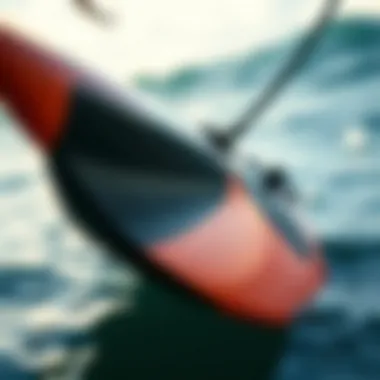
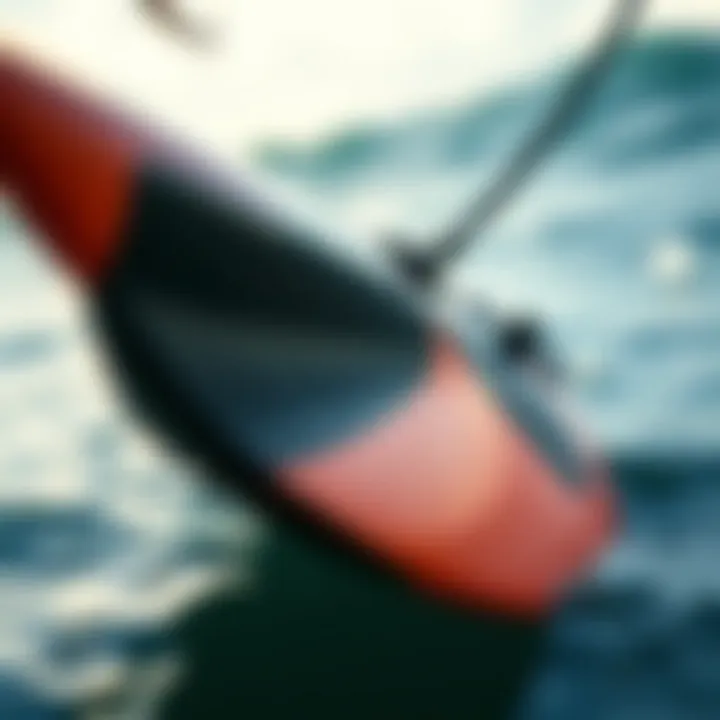
Material Considerations
Choosing the right materials for a foilboard greatly impacts its performance and durability. Foilboards are seasoned by their responses to water and air, making material choices significant. Here are key points to bear in mind:
- Lightweight Materials: Many boards use foam, which keeps them buoyant while also ensuring they remain easy to handle.
- Strength and Durability: Consider composites such as carbon fiber or fiberglass. These materials not only enhance performance but also improve longevity against rough usage and saltwater corrosion.
- Foil Materials: Aluminum is a common choice for affordability, while carbon fiber offers high performance at a steep price. The choice depends on individual budgeting and performance goals.
Remember that your equipment will endure a lot—waves, impacts, and variable conditions. Thus, investing in high-quality materials pays off in the long run.
Foil Shapes and Sizes
When it comes to foil shapes and sizes, these metrics dictate not only how a foilboard rides but also how it reacts to various conditions. There are numerous options and specifications for riders to choose from:
- Wing Shape: A larger surface area provides more lift at lower speeds, ideal for beginners or light winds. Conversely, smaller wings and more pronounced shapes allow for nimble riding and greater speed—perfect for advanced riders looking to hone their skills.
- Aspect Ratio: This refers to the width of the wing relative to its height. Higher aspect ratio foils are typically faster and more efficient, suited for experienced surfers, while lower aspect ratios offer more lift and stability, favored by beginners.
- Overall Size: For a novice, smaller foils make for manageable handling, while advanced riders may prefer larger setups for speed and performance.
"A well-designed foilboard is like a partner in a dance—the synergy between rider and board dictates the flow of movement."
For more insights into foilboards, consider visiting resources such as Wikipedia or Reddit.
Techniques for Foilboarding
Foilboarding is not just a sport; it's an exhilarating experience that requires specific techniques to harness its full potential. Understanding these techniques is essential for safety, performance, and enjoyment. For both novices and seasoned riders, developing sound techniques can be the difference between cruising effortlessly above the water or tumbling into the depths below. Through this section, readers will delve into the foundational skills and advanced riding strategies essential for mastering foilboarding.
Getting Started
The journey into foilboarding usually begins with a fundamental understanding of balance and control. Before you take to the water, it's crucial to learn the mechanics of your equipment and practice on solid ground. Here are some key aspects to consider:
- Choose the Right Equipment: Ensure you pick a foil and board suitable for your skill level. A larger foil might be more stable for beginners, whereas experienced riders might prefer something smaller and more responsive.
- Familiarize Yourself with the Basics: Spend some time standing on the board without the foil attachment to get used to how your body shifts weight. This will build muscle memory and balance.
- In-water Adjustments: When you first get in the water, be patient. Lower your foil gently into the water, and focus on keeping an upright position while slowly gaining speed.
Mastering the Basics
Once you’re comfortable with the initial steps, it’s time to kick it up a notch. Mastering the basics is crucial for elevating your skills and improving confidence in this thrilling sport. Start with these techniques:
- Learn to Pump: This is the essence of foilboarding. Pumping the board helps maintain speed and lift without needing waves. It involves a series of up-and-down motions that harness energy from the board's buoyancy. Practice this in flat water to get the feel for it.
- Managing Speed and Lift: Controlling your speed is vital. Too fast can lead to unwanted crashes, while too slow might not generate enough lift. Learn how to control your speed by shifting your weight forward and backward on the board while keeping the foil level with the water.
- Turning Techniques: Focus on executing smooth turns. Start with broad arcs before narrowing them down as your control improves. Use your body to lean into the turn, allowing your back foot to steer the board through the water.
Advanced Riding Techniques
For those who have notched a few hours of ride time and are looking to challenge themselves more, advanced techniques come into play. These skills not only enhance performance but also elevate the overall experience:
- Jumping: Once you can turn and pump effectively, try jumping. Initiate by transferring your weight backward and using the board’s lift to propel upward. Time your movements to land softly back on the foil to minimize the impact.
- Chop Hop: This technique is useful in choppier conditions. It involves bouncing over small waves or swells, keeping your balance while letting the foil skim across the surface.
- Carving: Carving with your foil can add style to your riding. By shifting your weight, you can achieve smooth, sweeping turns that resemble traditional surfing. It’s not just about going fast; it’s about making those turns count.
"With practice, the artistry of foilboarding evolves. The right techniques transform it from a mere sport to an expression of freedom over water."
Safety Considerations for Foilboarding
Engaging in foilboarding can be quite the thrill. However, it's essential to pause for a moment and consider the safety implications involved. Many riders often think about the adrenaline rush but overlook the risks associated with this high-octane sport. Whatever your skill level, having a robust grasp on safety can not only improve your experience but also prolong your passion for foilboarding.
Safety considerations are paramount. They not only protect the individual rider but also ensure the safety of others in shared waters. Understanding the essentials of safety gear, environmental factors, and potential risks can make a world of difference.
Essential Safety Gear
When it comes to hitting the water, the right equipment can be the key to a safe and enjoyable ride. Here's a rundown of what you might need:
- Foilboard: While the design of your board is essential, ensuring that it has been properly maintained and inspected can prevent accidents.
- Wetsuits: Not only do they keep you warm, but a well-fitting wetsuit can offer protection from abrasion and cuts. Go for high-quality materials that fit snugly without being restrictive.
- Leashes: They may seem like a small detail, but attaching a leash to the foilboard ensures that it doesn’t drift away from you, potentially posing a risk to other surfers.
- Life Vest: A personal floatation device is crucial, especially for beginners. Look for one that is buoyant and comfortable.
- Helmet: Protects your noggin from unexpected falls or collisions. Make sure it's one tailored for water sports.
In addition to this gear, carrying a first-aid kit specifically designed for water sports is also advisable.
Environmental Awareness
Foilboarding occurs in shared water spaces filled with natural beauty and delicate ecosystems. Respecting the environment and being aware of surroundings can go a long way. Here are a few points to ponder:
- Weather Conditions: Always check the weather forecast before heading out. High winds can make foilboarding unpredictable and dangerous.
- Local Wildlife: If you’re in an area known for sharks or other marine life, take precautions. Understand their behaviors and avoid areas where they are known to frequent.
- Other Water Users: Be aware of other surfers, swimmers, and boats in the water. Collisions can happen quickly, so always keep your head on a swivel.
"The ocean can be a friend or foe. It’s our job to understand her moods and act accordingly." – Anonymous
Common Risks and Mitigation Strategies
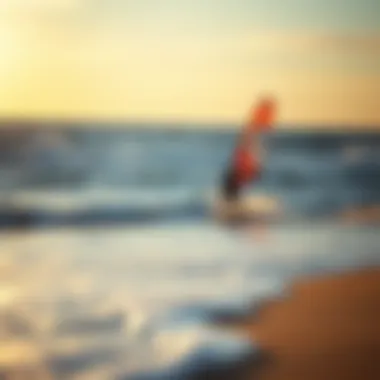
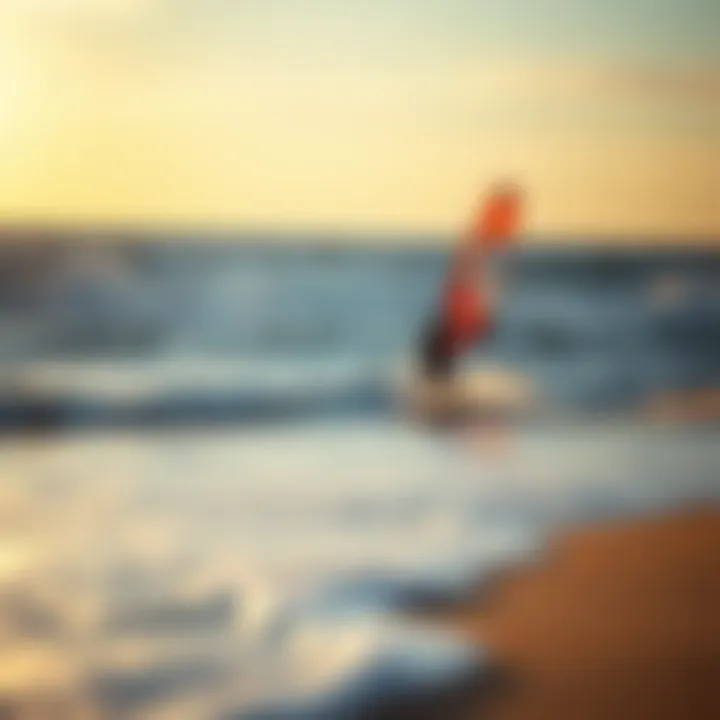
Even with the right gear and environmental awareness, foilboarding comes with its share of risks. Addressing these concerns proactively can prevent mishaps:
- Falling Off the Board: This can lead to injuries, particularly to the face or head. Wearing a helmet mitigates this risk significantly.
- Collision: Whether it’s with another rider or an object in the water, collisions can be dangerous. Keep a safe distance from others and always signal your intentions.
- Getting Caught in Strong Currents: Understanding local tide patterns can help. If conditions seem unsafe, it’s better to postpone the ride.
- Equipment Failure: Regular maintenance checks can help avoid equipment malfunctions. Make a habit of checking your gear before every session.
By incorporating robust safety practices into your routine, you can enjoy all that foilboarding has to offer while minimizing risks.
In the end, safety is not just about gear; it involves cultivating an awareness of one's surroundings and recognizing when it's best to call it a day for another ride.
The Foilboarding Community
The essence of foilboarding goes beyond the thrill of gliding over water. It's deeply rooted in community — a network of enthusiasts, instructors, and fans who collectively contribute to the growth and appreciation of this invigorating sport. Having a sense of belonging can elevate the experience, transforming solitary rides into shared adventures. Here, we dive into the vibrant tapestry of the foilboarding community, illuminating the various ways these interactions can benefit both newcomers and veterans alike.
Finding Local Communities
The search for local communities can be a treasure hunt. It’s not just about finding a group; it’s about forging connections, sharing experiences, and honing skills together. The beauty of this sport is that passionate individuals often unite in their pursuit of the waves. Whether it be through small beach meet-ups or large gatherings, local clubs can serve as hubs for enthusiasts of all levels. Here are some effective ways to discover your local foilboarding scene:
- Social Media Groups: Platforms like Facebook often host groups dedicated to foilboarding where local events are posted. Joining these can be a quick way to find fellow surfers in your area.
- Surf Schools and Rental Shops: Local surf schools have invaluable connections. They frequently organize workshops and outings, and might help you link up with experienced riders looking to mentor newcomers.
- Word of Mouth: Sometimes, just chatting with anyone at the beach can open doors. There’s always someone who knows someone who rides a foil.
No matter the method, finding your community will lead you to new friends and knowledge.
Events and Competitions
Events and competitions stand at the heart of the foilboarding world, bringing enthusiasts together to showcase talent, learn from one another, and ignite the competitive spirit that drives the sport forward. Here are a few notable elements surrounding events in this community:
- Local Competitions: Many coastal towns host informal competitions, often focusing on fun more than strict rules. It’s a great way to dip your toes into competitive riding and meet new peers.
- Annual Festivals: Events like the International Foilboarding Championship merge competition with celebration. These festivals not only feature races but also invite riders of all skill levels to participate in workshops and exhibitions.
- Networking Opportunities: These gatherings provide ample chances to connect with brands, sponsors, and other riders. Networking at such events can foster relationships that benefit both personal growth and community development.
Attending competitions often ignites inspiration and can lead you to elevate your own skills.
Online Resources and Forums
In an age where information flows freely through pixels, the foilboarding community thrives online. Forums and online resources function as platforms for sharing knowledge, asking questions, or simply swapping stories. Here are some notable digital spaces to explore:
- Reddit: Subreddits dedicated to surfing and foilboarding are bountiful. From beginner tips to advanced techniques, it’s a vibrant place to connect with fellow enthusiasts who share your passions. Check out r/surf for a thriving conversation.
- Dedicated Foilboarding Websites: Websites like Foilboarder.com or The Kiteboarder offer articles ranging from technical insights to gear reviews. Regular visits to these sites can keep you abreast of the latest innovations and trends.
- YouTube Channels: Video tutorials are particularly beneficial for visual learners. Numerous channels break down techniques, safety tips, and gear comparisons, allowing you to learn from the comfort of your home.
While digital resources may never fully replace the camaraderie of in-person interactions, they certainly complement the experiential learning that defines foilboarding.
"A community isn’t just a group of people. It’s a support network, a source of encouragement, and a wellspring of shared understanding."
In summary, the foilboarding community is a dynamic mosaic of connections and experiences, shaped by the collective passion of its members. By engaging with local scenes, participating in events, and exploring online resources, riders can enhance their journey in this thrilling sport.
Comparative Analysis: Foilboarding vs. Traditional Surfing
When we think about water sports, surfing has long been a favorite pastime for many. However, in recent years, another contender has carved its niche: foilboarding. A comparative analysis between these two is crucial for anyone looking to understand their differences, similarities, and potential advantages each can bring to the table. The discussion here focuses on performance and environmental variations, adding depth to your escapades on the water.
Performance Differences
Foilboarding offers a unique performance dynamic compared to traditional surfing. While traditional surfing relies on waves to propel the board across the surface of the water, foilboarding creates lift through a hydrofoil beneath the board. This design allows riders to glide above the water, resulting in a smoother ride. Some core benefits of choosing foilboarding are:
- Speed: Foils can achieve higher speeds with less energy. Riders can glide effortlessly over choppy waters, making this style less taxing overall.
- Less Wave Dependency: Unlike traditional surfers who hunt for the perfect wave, foilboarders can ride in more diverse conditions. This opens the door to riding in smaller swells or even flat water, lending a new avenue for exploration.
- Higher Maneuverability: Foilboards are known for their agility. The ride changes dramatically, allowing more vertical movement, which is exciting for those looking to push the limits of their skills on the water.
But it’s not all smooth sailing. Traditional surfing, with its reliance on natural wave patterns, still appeals to many due to its rich culture and physical challenge. Riders often enjoy:
- Connection to the Ocean: Every wave is different, which means traditional surfers often feel more in tune with the ocean and its rhythms.
- Simplicity: With no complex gear to set up, traditional surfing can be easier for beginners. You just hop on the board and go.
Both disciplines have their champions and challenges, but understanding these performance differences can help in choosing the right approach based on personal goals.
Experience in Various Conditions
When it comes to the conditions under which water sports thrive, each style has its own preferences. Foilboarding is remarkably versatile. Riders can hit the water in a variety of environmental setups—including but not limited to:
- Choppy Waters: Because the foil elevates the board above the water’s surface, it reduces the impact of choppy waves. Writers can maintain speed and stability, even when the conditions are less than ideal.
- Flat Water: Unlike traditional surfing which demands some degree of wave energy, foilboarding can be enjoyed on completely flat water. This allows enthusiasts to explore lakes, bays, and even tidal pools, broadening the horizons of where one can enjoy the sport.
- Wind and Currents: Foilboarding can also benefit from winds, leveraging them for speed when kiteboarding or windsurfing, something that traditional surfing doesn't embrace as effectively.
For traditional surfers, however, the experience becomes more engaging in specific conditions—namely, the quest for the perfect wave. Optimal surfing conditions can mean:
- Breaking Waves: Traditional surfers thrive where waves crash, creating a thrilling interaction with the ocean that cannot be replicated on still water.
- Steady Swells: Optimal conditions for classic surfing often involve clean, consistent waves, where surfers can hone their skills and experiment with tricks.
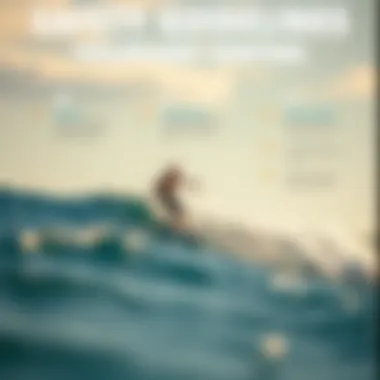
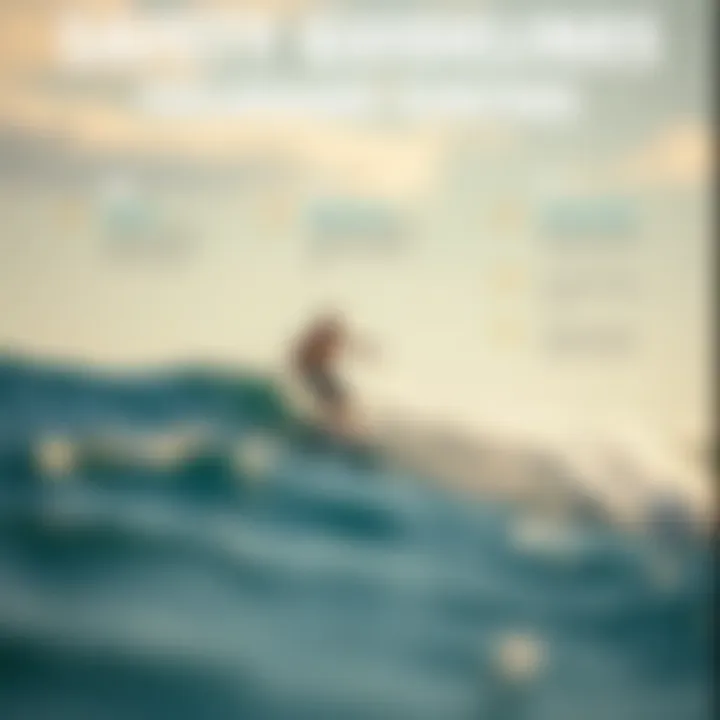
Overall, the differences in experience across various conditions showcase the distinct approaches to these two surfing styles. Ultimately, it comes down to personal preference—one offers tranquility, while the other presents the thrill of the hunt.
Choosing the Right Foilboard
Selecting the right foilboard is a pivotal step in your foilboarding journey. It’s not about picking the shiniest one off the rack or the latest fad; it’s about finding a board that complements your riding style, skill level, and the conditions you typically encounter. This choice can make a significant difference in your learning curve and overall enjoyment of the sport. As with any sport, the right equipment can enhance performance, boost confidence, and even prevent injuries.
Assessing Skill Level
Understanding your own proficiency level is a cornerstone of choosing the right foilboard.
- Beginner: If you're just starting out, a larger, more stable board is typically beneficial. Boards with greater volume offer more buoyancy, making it easier to get up on the foil and stay balanced. Look for models with a wider outline which increases stability. Often, hybrids or all-around boards can be a good fit for newcomers who might still be learning to manage their balance and technique.
- Intermediate: As you progress, you might look for a board that offers more responsiveness without sacrificing stability. You may want to consider a medium-sized board that is still forgiving but allows for enhanced maneuverability. At this stage, experimenting with different foil setups can also help you hone your skills.
- Advanced: Experienced riders usually opt for smaller, more streamlined boards that promote agility and speed. These boards often require precise balancing skills and can be less forgiving for mistakes. Riders at this level can benefit from boards specifically designed for racing or surf conditions, depending on personal preferences or riding styles.
Understanding this escalation is vital. Make sure to assess your own abilities honestly and be willing to adapt your choice as you grow.
Brand Comparisons
Not all foilboards are created equal. Delving into brand comparisons can guide you in making an informed purchase. Here are a few reputable brands known for their quality:
- Lift Foils: Widely considered a leader in the industry, Lift is recognized for their innovation and performance. Their boards cater to both beginners and experienced riders, providing options that suit a range of skill levels.
- Naish: Known for durability and versatility, Naish offers a range of boards that are well-suited for various water conditions. Their designs often consider rider feedback for improvement.
- Slingshot: Popular among freestyle enthusiasts, Slingshot provides boards with a focus on flexibility and responsiveness. Their boards have a reputation for being able to withstand tough conditions while still helping the rider achieve impressive stunts.
- Fanatic: This brand leans towards high-performance boards that often reflect advanced riding styles. They are popular choices among competitive riders.
Keep in mind that factors like warranty, customer service, and community support can also weigh in on your decision. A brand that offers good customer care could be invaluable when you're making adjustments or seeking advice.
By taking into account both personal skill level and reliable brands, you can navigate the sea of options and find a foilboard that will enhance your learning and enjoyment of this thrilling water sport.
"The joy of riding a foilboard comes not just from the experience itself but also from the journey of improvement to get there."
To deepen your understanding, you might explore resources such as Wikipedia, Britannica, and communities on platforms like Reddit or Facebook. These links can provide ongoing support as you dive into the foilboarding world.
Maintenance and Care for Foilboards
Proper maintenance and care for foilboards is not merely a matter of keeping the equipment looking shiny and new; it’s about ensuring longevity and performance. A well-maintained foilboard enhances safety, improves ride quality, and ultimately extends the life of your investment. Let's break down what good care looks like, focusing on cleaning and storage.
Cleaning Recommendations
Foilboards endure a lot. From saltwater to sand, the elements can wreak havoc if left unchecked. Here's how to keep your gear in top shape:
- Rinse After Use: One of the simplest yet most effective practices is to thoroughly rinse your foilboard and accessories with freshwater after every session. Salt and sand can accumulate in crevices, leading to corrosion and wear over time.
- Use Mild Soap: Occasionally, a thorough wash with a mild detergent can help combat grime build-up. Avoid harsh chemicals that could damage the materials.
- Scrub Carefully: For stubborn stains or spots, use a soft brush. Be gentle but thorough; you want to avoid scratches while ensuring the board isn't harboring any unwanted particles.
- Dry Properly: Always dry your foilboard in a shaded area rather than letting it sit under direct sun, which can warp some materials over time. Lay it flat or prop it up.
"Taking care of your foilboard is like tending to a garden; the more love and attention you give, the more you'll reap the benefits later."
Storage Practices
How you store your foilboard can significantly affect its lifespan and operational efficacy. Here are essential considerations:
- Avoid Extreme Temperatures: Keeping your foilboard stored in a climate-controlled environment is ideal. Extreme cold can make materials brittle, while excessive heat can warp shapes.
- Use a Bag or Cover: Invest in a protective bag or cover tailored for foilboards. It guards against scratches and dust when not in use.
- Keep it Upright: When storing long-term, keep the board upright rather than leaning against a wall. This posture helps maintain the foil alignment and prevents warping of the board shape.
- Inspect Regularly: Even when not in use, check your gear periodically for any signs of wear or damage. Addressing minor issues before they escalate can save time and cost in repairs down the line.
Maintaining your foilboard is a continuous effort that pays dividends in performance and durability. Whether you’re cruising the waves or catching air, these practices help ensure your ride is smooth and enjoyable.
The Future of Foilboarding
As we peer into the crystal ball of foilboarding, several key factors come to light, shaping how this sport could evolve in the years to come. The future of foilboarding is tightly interwoven with technological advancements, design innovations, and an expanding community that’s eager to embrace new challenges. There is a palpable excitement around where this sport is headed, with several trends beckoning enthusiasts and newcomers alike.
Technological Innovations
In the ever-evolving landscape of water sports, technology has been a game-changer. Foilboarding is no exception. One of the most significant transformations lies in the materials used to craft foils and boards. Lightweight composites have emerged, offering superior performance without weighing you down. In fact, recent entries into the market utilize carbon fiber because of its strength-to-weight ratio. The end result? Increased agility and the ability to tackle more diverse and demanding conditions.
Moreover, smart technology is creeping into this realm. We can expect to witness foils equipped with integrated sensors, providing real-time feedback on rider performance, speed, and stability. This integration of data not only enhances the riding experience but also opens avenues for coaching and personal improvement, allowing riders to analyze their performance in a way that was previously unimaginable.
In summary, the technological future of foilboarding promises to push boundaries, making it more accessible and exhilarating.
"The beauty of foilboarding is that with every turn of the screw, we find ourselves redefining the experience. It's not just about riding; it's about mastering the art of flight over water."
Foilboarding's Role in Water Sports Evolution
As foilboarding garners more attention, its role in the broader spectrum of water sports is becoming increasingly prominent. It serves not only as a thrilling alternative to traditional surfing but also as a catalyst for innovation across various disciplines such as kiteboarding, windsurfing, and even stand-up paddleboarding.
This synergy between sports enhances overall skill sets, encouraging enthusiasts to cross-train and push their limits. With foilboarding’s unique ability to glide over smaller swells, it appeals to urban dwellers who may not have access to big waves. The result is an inclusive environment where people can experience their love for waters regardless of their geographical constraints.
Additionally, the rise of foilboarding has instigated a wave of competitions and events that incorporate foil categories. These events not only accelerate the sport's popularity but also lead to a sense of camaraderie and community building among practitioners. As foilboarding continues to develop its identity, it becomes an integral thread in the fabric of water sports, redefining what it means to ride the wave.
To conclude, understanding the evolution and future trajectory of foilboarding is crucial for anyone looking to delve deeper into the sport. It’s not merely about the ride; it's about the journey of continuous improvement, community fusion, and embracing the unknown.















